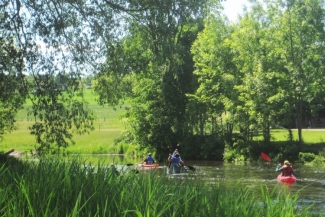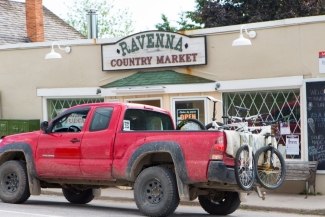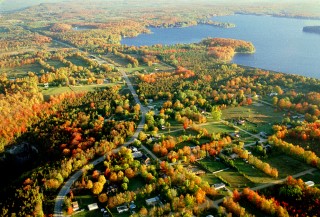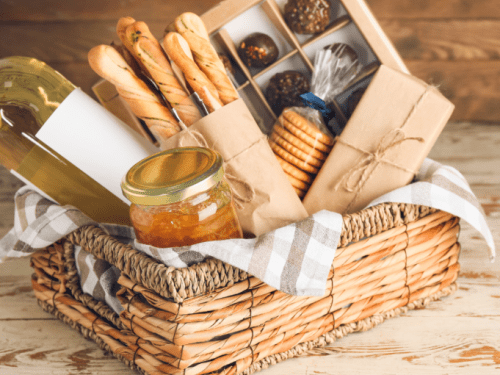This gentle river flows 40 kilometres from Kimberley to Heathcote and was a key transportation route in the 19th century. Home to the great blue heron, the great horned owl, white tailed deer and its namesake – the beaver, this is a great route for beginner paddlers. Put ins are available at 3 access points: Grey Road 13 north of Kimberley, on the Epping Side Road and at Heathcote Park, allowing you to vary your route from 6 to 15 kilometres. Please note that the Beaver River flows very slowly, and what might look like a 2 hour paddle can turn into 6 hours or more.
*Please note: There is no public parking at Slabtown river access.
Before you dive in
What you pack for a day of paddling depends on your route, your chosen boat (kayak, canoe or stand-up-paddleboard aka: SUP) and the time of year. With that said, there are some simple things to keep in mind when you’re planning a paddle. First, whatever goes in the boat, could in theory, end up wet. Most outfitters sell dry bags specifically made to seal with several folds, keeping whatever is inside dry, even if the bag goes for a dip. This is a must have for sleeping bags and your tent if you’re canoe camping. It’s also a good idea for car keys, cell phones, cameras etc. If you’re canoeing or kayaking with kids, it’s a good idea to pack easy to eat snacks, books or small toys that will help keep them busy if you have a long paddle planned. Finally, Transport Canada has a number of rules about the safety equipment you must have on board for canoes, kayaks and SUPs. At a minimum, you need a personal flotation device for each person in your boat. To learn more, visit the Transport Canada website.
River Paddling and Tubing Safety Tips
-
Never paddle alone, and always stay with your group or partner.
-
Make a plan and share it with someone outside of your group.
-
Download the ‘what3words’ app for emergency services in case you need to call for help.
-
River conditions and weather can be unpredictable. Check river conditions before you go and give yourself extra time to complete your route. Paddling in canoes and kayaks provides better control and creates a safer experience than floating in a tube. Tubing is not recommended.
-
Carry appropriate safety equipment including a bailer, buoyant rope and whistle.
-
Dress appropriately for the weather, including sunscreen and protective clothing.
-
Carry a cell phone in a dry bag but be aware that service may be limited on the river.
-
Bring food and plenty of water. Remember – alcohol and boating/tubing do not mix!
-
Always wear a life vest or a PFD, regardless of river conditions.
-
Stay aware and watch for hazards such as fallen trees, rocks or rapids.
-
Paddle in your skill level. If you’re not an experienced paddler, use one of our local guides or outfitters.









